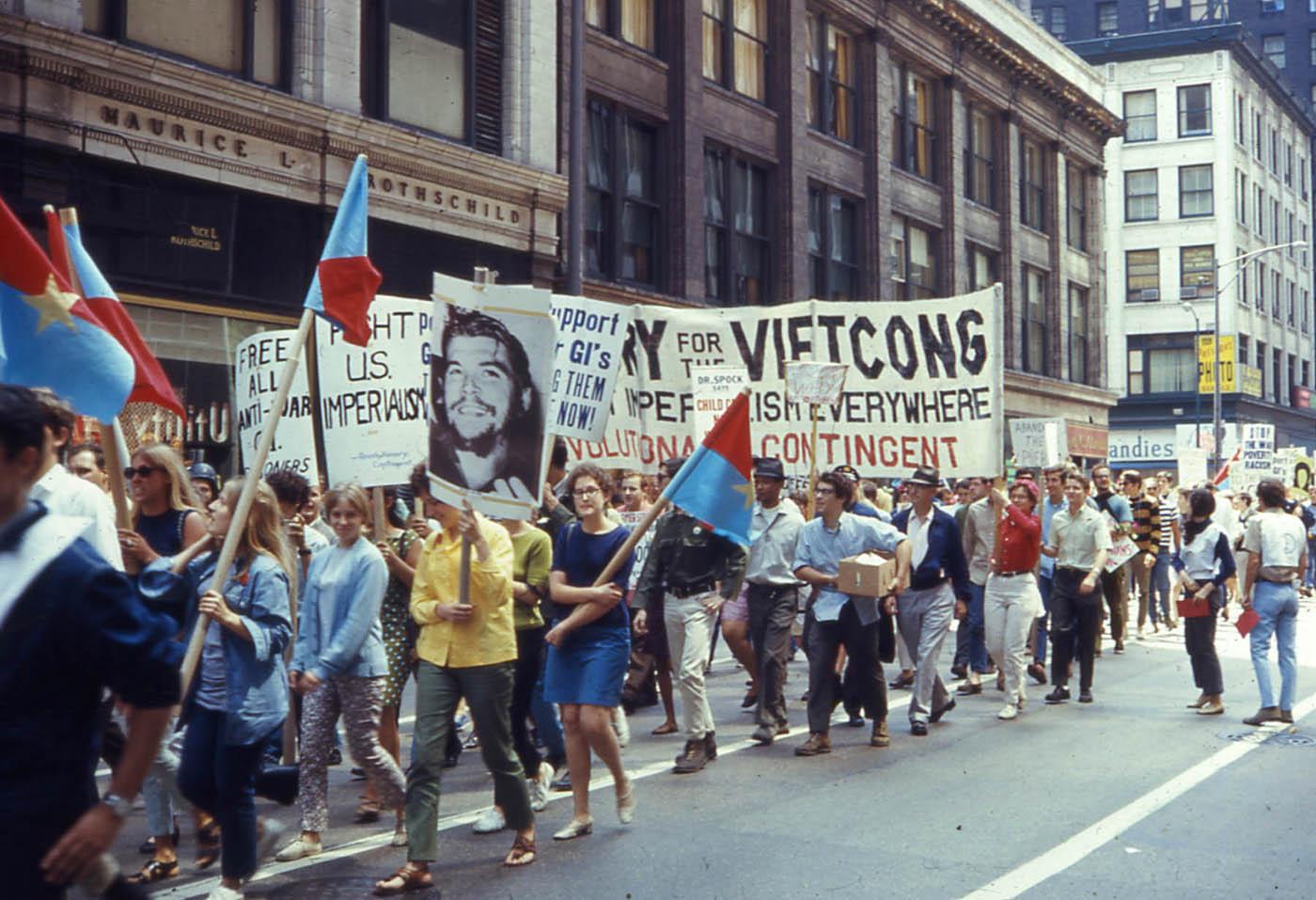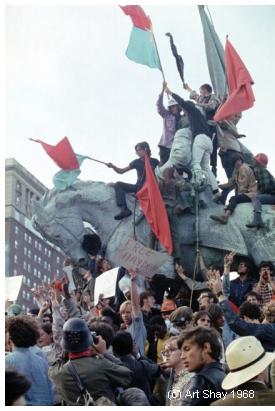Blog #104 – Chicago Convention as Symbol

Students protesting the Vietnam War in Chicago. The blue and red flag is supprting the Viet Cong.
After we’d watched the American Experience video on the Chicago Convention in 1968 on Friday, it struck me how much that the clash encapsulated many of the tensions in the 1960s. The clash between students and police on the outside of the convention, and the clash between the Peace platform candidate, McGovern, vs. pro-war candidate, Vice President, Humphrey, both appeared to be like a symbol of how divided the nation was in 1968. See this link for a day-by-day calendar of the tumultuous events of 1968. For instance:
– The class differences between Chicago’s working class police officers and the “spoiled brats” as U.S. Attorney Thomas Moran called the college students who had gathered in Chicago to protest the war that could directly affect any of these young men with the draft on either side of the riot line (though truthfully, the police officers were most likely to get drafted and not be able to a deferment from a doctor or university);
– the rise of violence, disorder and chaos in daily life that impacted the political process like the deaths of John Kennedy (1963), Malcolm X (1965), and Dr. King and Robert Kennedy (1968). There had been riots in Watts, Los Angeles, Detroit and Newark, N.J., and across the country after Dr. King’s death in April 1968. 
– The rights to free speech and freedom to peaceably assemble were directly challenged at this convention by the Chicago Police Dept. and the Illinois National Guard. Furthermore, the indirect censorship of the TV coverage by not allowing more than one live feed from the city (infringement of freedom of the press) so that the TV news couldn’t cover both the convention and the protests at the same time;
– The differing tactics of the anti- war protesters as symbolized by David Dellinger and Rennie Davis (non-violence) vs. Tom Hayden (“by any means necessary”) and the outcome of the marches and even legal protests at Grant Park.
Questions:
1. Do you think the police used “reasonable force” when dispersing the protestors during the week of the convention? When? Why or why not?
2. Do you think the protesters crossed the line by fighting with the police? Why or why not?
3. Do you think that the peace delegates / McCarthy’s followers would have been satisfied if President Johnson had allowed VP Humphrey to make some concessions over the Vietnam War? Why or why not?
4. How do you think that the images from this convention influenced the outcome of the 1968 election w/ Nixon, Humphrey, and Wallace? Why?
Blog due Monday, November 6. 300 words minimum for the total blog.


